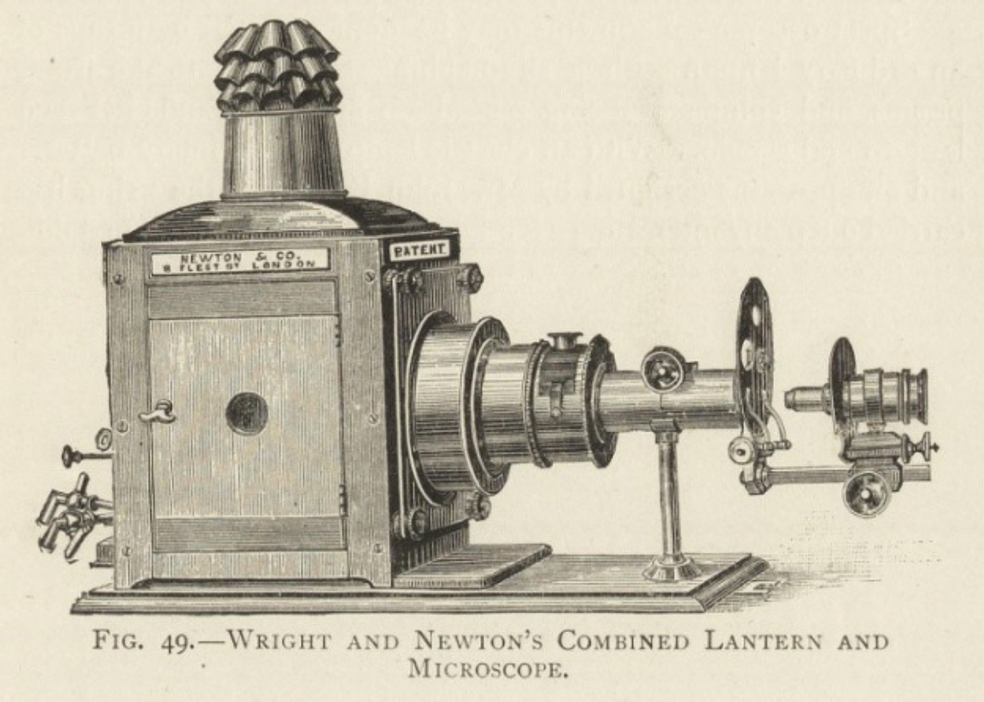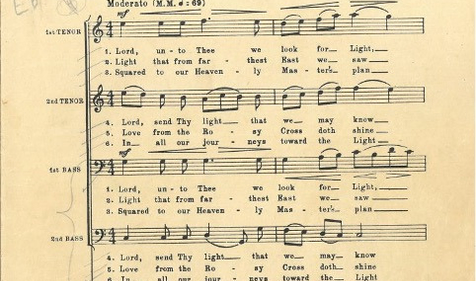In the early 19th century, many Masonic lodges utilized magic lanterns to help candidates better understand the allegory and symbolism presented in Freemasonry’s degrees. We explore the history of magic lanterns in our latest blog.
Since the dawn of Freemasonry, men have gathered in lodges seeking to learn our highest principles and become better men. While our teachings have been left largely unchanged over time, the way these truths have been presented has evolved.
Long before the days of modern technology, many lodges across America purchased magic lanterns, or stereopticons, to teach new initiates the secret lessons of various degrees. These devices allowed Masons to gain a deeper understanding of the craft through hand-painted “slides” that illustrated key concepts of the degree or principle in question. Today, we explore the once novel invention that first bridged the gap between technology and Freemasonry.

What is a magic lantern?
In the late 1800s, a device called the magic lantern was used across America to project what was then considered dazzling images and illustrate stories, lectures, and concepts. This early projector could be found in households, schools, churches, and many other venues for both entertainment and educational purposes.
The magic lanterns ranged in style, with numerous variations including everything from a simple wooden box with brass parts to ornately designed boxes with multiple lenses.

Magic lanterns presented various images on “slides.” The nature of slide projection and the ability to create the illusion of moving slides presented Americans and corporations with a unique opportunity for visual and moving storytelling. Predating cinema, this innovation of “moving pictures” quickly took off and became one of the most popular forms of entertainment. In fact, the Scottish Rite Masonic Museum & Library recently shared a children’s story produced on magic lantern slides called “The Snowball” that was fairly popular during its time of production (circa 1895).
How did a magic lantern work?
The magic lanterns projected images from an artificial light source, beginning with candles and kerosene lamps, and then later to limelight and electricity. Combining light and a combination of lenses, magic lanterns enlarged small, transparent images and projected them onto a wall or screen.

Some of the first lantern slides were created by photographing existing art and printing, transferring them onto glass. However, these early slides often resulted in lackluster projections with many images unclear when scaled to a larger size.
This brought forth a booming market for lanterns and lantern slide production, with dozens of companies focused on manufacturing premier optical devices such as lanterns and slides. These manufacturers began overpainting light prints of images to make clearer projected pictures. Over time, this process evolved into artists’ hand painting original work onto glass slides and images.
How Freemasons began adopting magic lanterns
By the early 1900s, magic lanterns were heavily advertised all across the country. Many manufacturers marketed some of their lanterns specifically to Masonic and fraternal groups, as seen in the 1890 letter below from the McIntosh Battery and Optical Company in Chicago, Illinois to an Odd Fellows lodge. The company can be seen touting the benefits of their new “Secret Society Stereopticon…designed especially for illustrating the Rituals of the different secret societies.”

Additionally, many regalia manufacturers published catalogs advertising a variety of magic lanterns and slides for Masonic organizations. Oftentimes, these manufacturers referred to special lodge lanterns as “Secret Society Lanterns.” These magic lanterns were lightweight and designed for travel. For example, M.C. Lilley manufactured the “Lilley Standard Magic Lantern...the most complete magic lantern for secret society use,” while other models like the “Columbus,” “Batchelor,” and “Imperial” magic lanterns boasted a sharp, clear picture eight to ten feet in diameter from a distance of up to 18 feet.

Lodges could purchase everything they need - from the lantern and muslin screen, to glass slides from one of the regalia catalogues.
Magic lanterns in the lodge room
Eventually, every fraternal lodge from Freemasons to the Knights of Pythias owned a magic lantern and a variety of glass magic lantern slides.
The slides were used similarly to earlier tracing boards, intended to provide a visual aid to lodge instruction. They used Masonic symbols to illustrate the principles embedded in the degrees of Freemasonry, helping candidates associate an image with a Masonic idea. Often, magic lantern slides were simply old tracing boards printed on glass. An example can be found below, where a magic lantern slide portrays the concept of the Pillars of the Porch found in the Fellowcraft degree.

Just as each degree is rich in literature, a complete set of Masonic slides - including those relevant to the Scottish Rite, York Rite, and all other appendant bodies - would number well over 500 slides. The set of magic lantern images relevant to the Master Mason degree alone held 16 slides. At an average of $2 a slide, the equivalent of roughly $50 USD today, magic lanterns and their slides were considered a significant investment for many lodges.
Magic lanterns today
The advent of cinema and the invention of smaller transparencies, as well as the Kodachrome three-color process, led to a decline in the popularity and use of magic lanterns both in and outside of Masonic lodges. Still, to this day there remains a fascination with magic lanterns and its stories. Some lodges can still be found using lantern slide imagery in their lectures and there are thousands of lanterns and slides preserved in museums across the world, including our very own Scottish Rite Masonic Museum & Library.
Today, lantern slides represent a tangible example of the visual storytelling inherent in Freemasonry and help inform what Masonic culture and education looked like for candidates and members during the late 19th and early 20th centuries.
Want to take a deeper dive into magic lanterns and their use in lodges? Check out our TNL article - page 7.
Related Stories
Discover additional Scottish Rite blogs and news on this topic.



